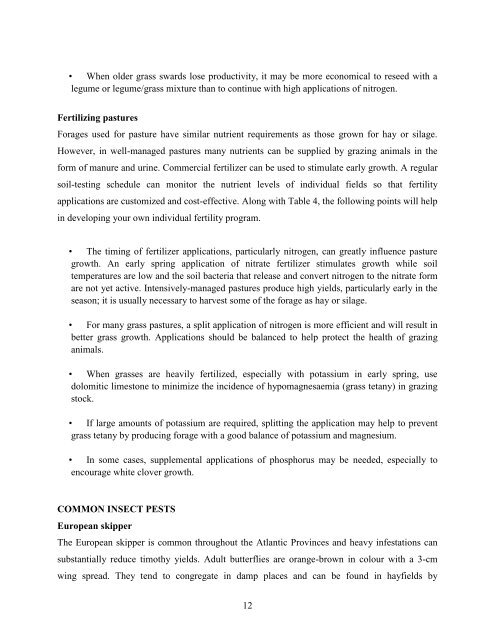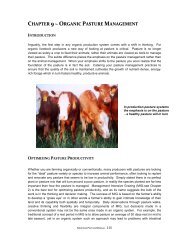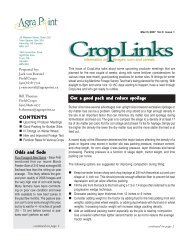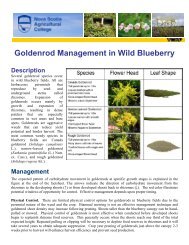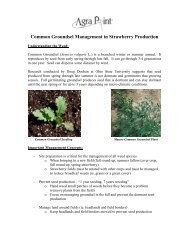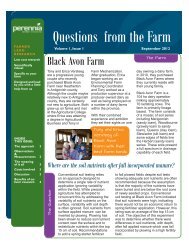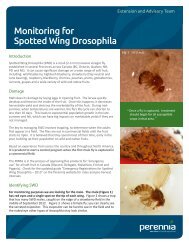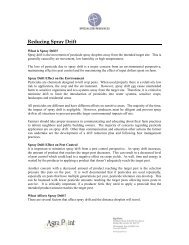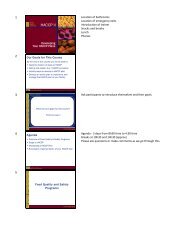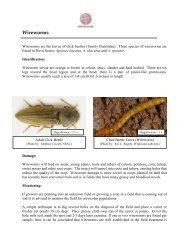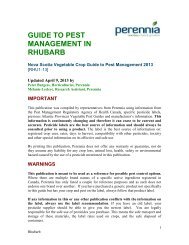Create successful ePaper yourself
Turn your PDF publications into a flip-book with our unique Google optimized e-Paper software.
• When older grass swards lose productivity, it may be more economical to reseed with a<br />
legume or legume/grass mixture than to continue with high applications of nitrogen.<br />
Fertilizing pastures<br />
<strong>Forage</strong>s used for pasture have similar nutrient requirements as those grown for hay or silage.<br />
However, in well-managed pastures many nutrients can be supplied by grazing animals in the<br />
form of manure and urine. Commercial fertilizer can be used to stimulate early growth. A regular<br />
soil-testing schedule can monitor the nutrient levels of individual fields so that fertility<br />
applications are customized and cost-effective. Along with Table 4, the following points will help<br />
in developing your own individual fertility program.<br />
• The timing of fertilizer applications, particularly nitrogen, can greatly influence pasture<br />
growth. An early spring application of nitrate fertilizer stimulates growth while soil<br />
temperatures are low and the soil bacteria that release and convert nitrogen to the nitrate form<br />
are not yet active. Intensively-managed pastures produce high yields, particularly early in the<br />
season; it is usually necessary to harvest some of the forage as hay or silage.<br />
• For many grass pastures, a split application of nitrogen is more efficient and will result in<br />
better grass growth. Applications should be balanced to help protect the health of grazing<br />
animals.<br />
• When grasses are heavily fertilized, especially with potassium in early spring, use<br />
dolomitic limestone to minimize the incidence of hypomagnesaemia (grass tetany) in grazing<br />
stock.<br />
• If large amounts of potassium are required, splitting the application may help to prevent<br />
grass tetany by producing forage with a good balance of potassium and magnesium.<br />
• In some cases, supplemental applications of phosphorus may be needed, especially to<br />
encourage white clover growth.<br />
COMMON INSECT PESTS<br />
European skipper<br />
The European skipper is common throughout the <strong>Atlantic</strong> Provinces and heavy infestations can<br />
substantially reduce timothy yields. Adult butterflies are orange-brown in colour with a 3-cm<br />
wing spread. They tend to congregate in damp places and can be found in hayfields by<br />
12


